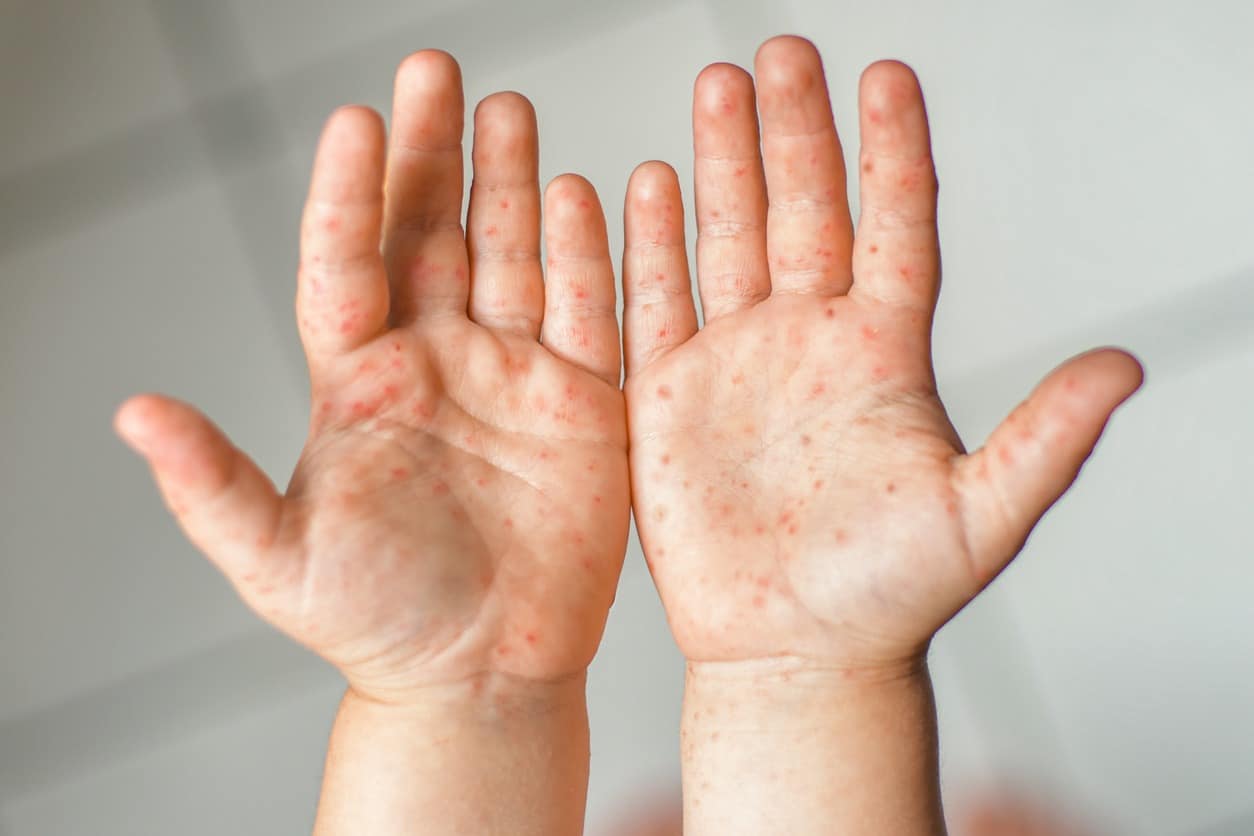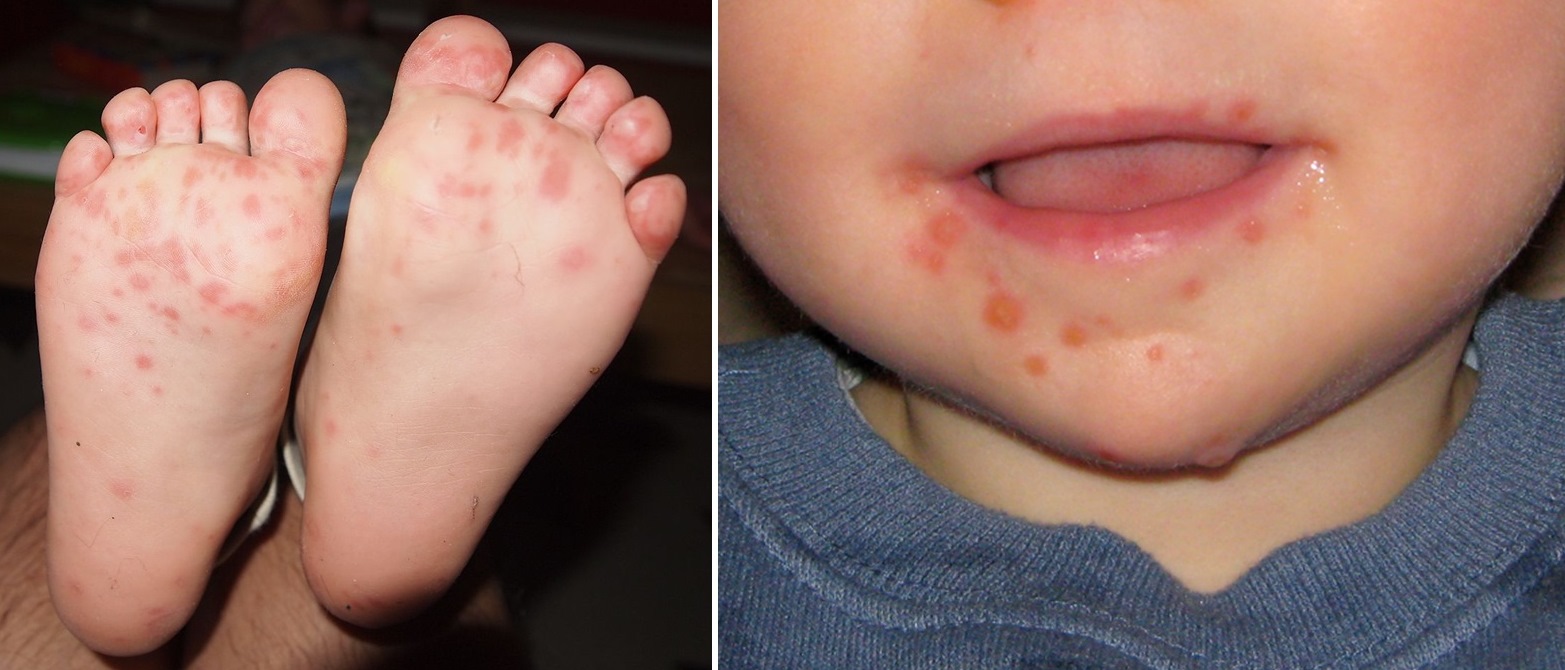Symptoms and Diagnosis

Hand foot and mouth disease – Hand, foot, and mouth disease (HFMD) is a common childhood illness caused by a virus. It is characterized by a rash of small, red blisters on the hands, feet, and mouth. HFMD is usually mild, but it can sometimes lead to more serious complications.
The recent outbreak of hand, foot, and mouth disease has raised concerns among parents and healthcare professionals alike. While the disease is generally mild, it can be uncomfortable and lead to complications in some cases. As world leaders gather for the Biden-NATO summit , they must prioritize global health initiatives to prevent and control the spread of infectious diseases like hand, foot, and mouth disease.
The symptoms of HFMD can vary, but they typically include:
- A fever
- A sore throat
- A runny nose
- A loss of appetite
- A rash of small, red blisters on the hands, feet, and mouth
HFMD is diagnosed based on the patient’s symptoms and a physical examination. In some cases, a laboratory test may be done to confirm the diagnosis.
Hand, foot, and mouth disease, a common childhood illness, is caused by a virus. The virus can be spread through contact with an infected person’s saliva, mucus, or feces. Symptoms of hand, foot, and mouth disease include fever, sore throat, loss of appetite, and a rash on the hands, feet, and mouth.
Davante Adams vs Chargers is a matchup that has been highly anticipated by football fans. Adams is one of the most talented wide receivers in the NFL, and he will be facing off against a tough Chargers defense. The outcome of this game could have a major impact on the playoff race in the AFC.
Differential Diagnosis
HFMD can be confused with other similar conditions, such as chickenpox, measles, and scarlet fever. However, there are some key differences between these conditions.
- Chickenpox is caused by the varicella-zoster virus, and it is characterized by a rash of small, itchy blisters that can appear anywhere on the body.
- Measles is caused by the measles virus, and it is characterized by a fever, a cough, a runny nose, and a rash of small, red spots that can appear anywhere on the body.
- Scarlet fever is caused by the Streptococcus pyogenes bacteria, and it is characterized by a fever, a sore throat, a rash of small, red spots that can appear anywhere on the body, and a strawberry tongue.
Transmission and Prevention
Hand, foot, and mouth disease is a highly contagious infection caused by viruses. The virus spreads through contact with an infected person’s saliva, mucus, or feces.
Modes of Transmission
The virus can be transmitted through the following modes:
- Direct contact with an infected person’s saliva, mucus, or feces
- Touching objects or surfaces contaminated with the virus
- Inhaling respiratory droplets from an infected person
Prevention
There are several ways to prevent the spread of hand, foot, and mouth disease, including:
- Washing hands frequently with soap and water: This is the most important way to prevent the spread of the virus.
- Avoiding touching the eyes, nose, or mouth: The virus can enter the body through these openings.
- Cleaning and disinfecting surfaces that may be contaminated with the virus: This includes toys, doorknobs, and countertops.
- Staying home from school or work if you are sick: This will help prevent the virus from spreading to others.
- Covering your mouth and nose when you cough or sneeze: This will help prevent the spread of respiratory droplets.
Vaccination
There is a vaccine available to prevent hand, foot, and mouth disease. The vaccine is safe and effective, and it is recommended for children aged 6 months to 5 years. The vaccine is not 100% effective, but it can help to reduce the severity of the illness.
Treatment and Management: Hand Foot And Mouth Disease

There is no specific cure for hand, foot, and mouth disease. Treatment focuses on relieving symptoms and preventing complications. Supportive care measures are essential, including pain management, hydration, and rest.
Pain Management
- Over-the-counter pain relievers, such as ibuprofen or acetaminophen, can help reduce fever and discomfort.
- Cool compresses or baths can provide temporary relief from itching and pain.
Hydration
Adequate hydration is crucial to prevent dehydration, especially in young children. Encourage plenty of fluids, such as water, juice, or electrolyte solutions.
Complications, Hand foot and mouth disease
While hand, foot, and mouth disease is usually mild, it can occasionally lead to complications. These include:
- Dehydration: Severe dehydration can require hospitalization and intravenous fluids.
- Meningitis: Inflammation of the membranes surrounding the brain and spinal cord. This is a rare but serious complication.
- Encephalitis: Inflammation of the brain. This is also a rare but serious complication.
If any of these complications develop, immediate medical attention is essential.